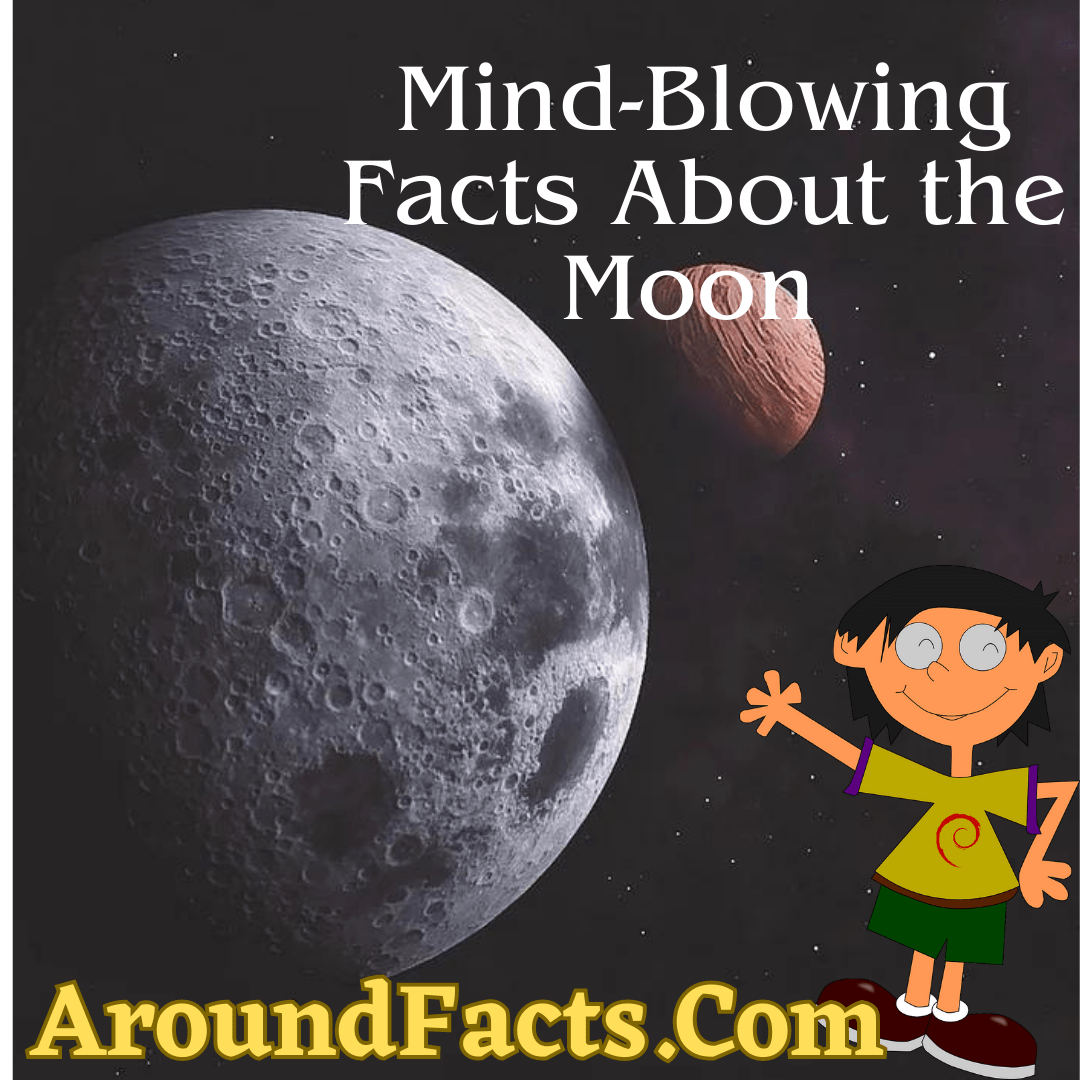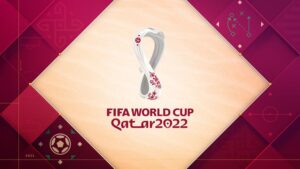Table of Contents
20 Mind Blowing Facts About The Moon
fun facts about the moon / moon information
The Moon, Earth’s only natural satellite, has fascinated humanity for centuries. Its mysterious beauty and enigmatic presence have inspired countless works of art, literature and scientific discoveries. In this article, we’ll discover 20 surprising facts about the Moon that will deepen your understanding and appreciation of our celestial neighbor.
1 – Origin of Moon
Scientists believe that the Moon was formed as a result of a collision between Earth and a Mars-sized celestial body about 4.5 billion years ago. This impact caused the ejection of debris, which eventually merged to form the Moon.
2 – Size and Distance
The Moon is about one-quarter the size of Earth, with a diameter of approximately 3,474 kilometers (2,159 mi). It is located at an average distance of 384,400 km (238,855 mi) from our planet.
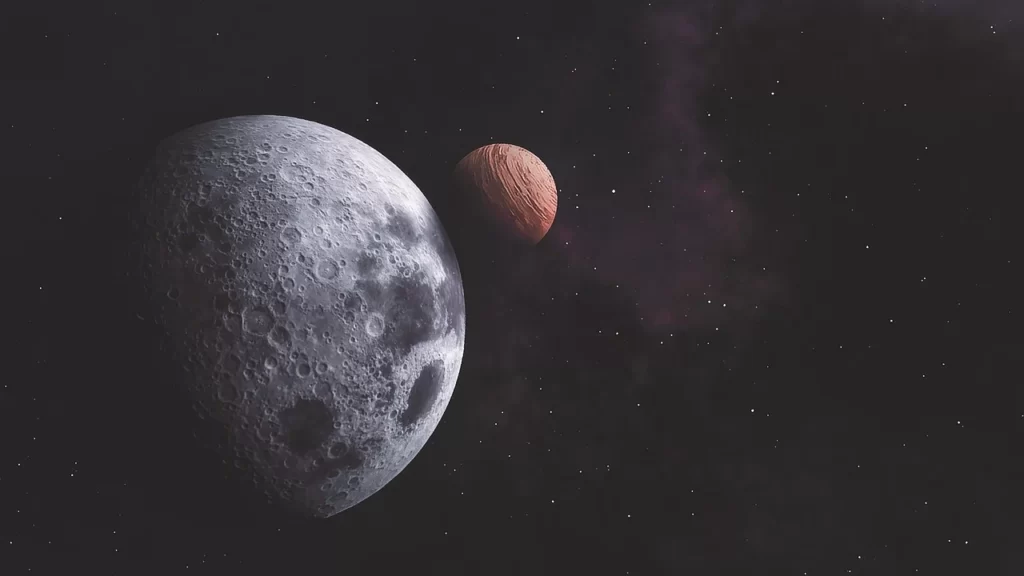
3 – Moon’s surface
The Moon’s surface is covered with a fine powder-like dust called regolith, which is composed of various elements including oxygen, silicon and aluminium. Regolith is the result of meteorite impacts over billions of years.
interesting facts about the moon | 10 interesting facts about moon
4 – Moonquake
Contrary to popular belief, the Moon is not a dead world. It experiences Moon earthquakes, which are similar to earthquakes on Earth but of lesser magnitude. These earthquakes are caused by tidal forces generated by the gravitational interaction between the Earth and the Moon.
5 – Lunar Maria
Dark spots visible on the Moon’s surface are known as lunar maria, which is Latin for “seas”. However, they are not actual bodies of water, but vast plains created by ancient volcanic eruptions.
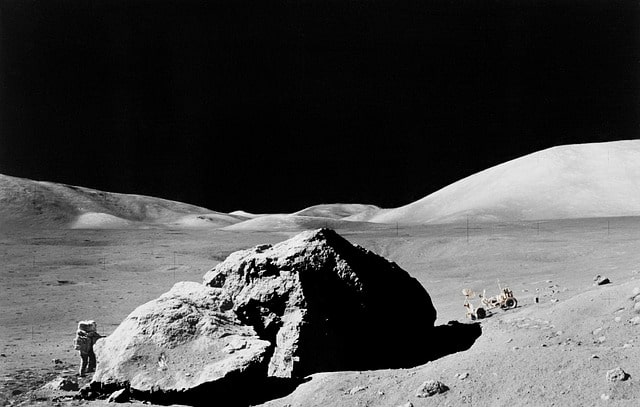
6 – Moon’s amosphere
While Earth has a thick atmosphere, the Moon has a very thin atmosphere called the exosphere. It contains very small concentrations of various gases, including helium, neon, and argon, which are believed to result from the solar wind and radioactive decay.
10 facts about the moon | 5 facts about the moon
7 – Moonwalking
The Apollo missions brought humans to the Moon, and astronauts visiting its surface discovered a strange phenomenon. Due to the absence of atmosphere and low gravity, their footprints are preserved for years, as there is no wind or rain to erode them.
8 – Synchronous Rotation
The Moon is in synchronous rotation with Earth, which means that it takes about the same amount of time to complete one rotation on its axis as it does to orbit our planet. As a result, we always see the same side of the Moon facing Earth.
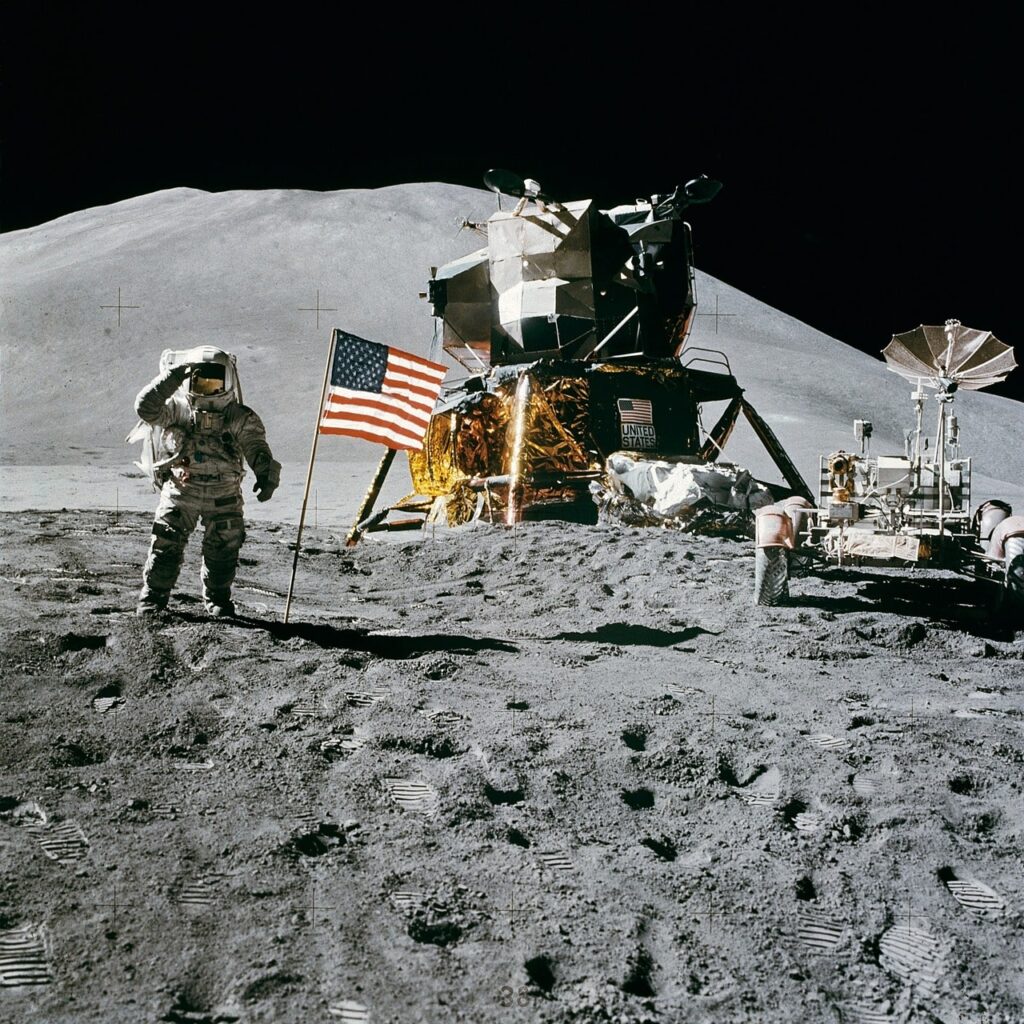
9 – Effect of Moon on Tides
The gravitational pull of the Moon has a significant effect on Earth’s tides. As it orbits around our planet, the Moon’s gravitational force causes water in the oceans to bulge, resulting in the rise and fall of tides.
cool facts about the moon | 30 facts about the moon
10 – Moon and Eclipse
Moon plays an important role in solar and lunar eclipses. During a solar eclipse, the Moon passes between the Sun and Earth, casting a shadow on our planet. In contrast, a lunar eclipse occurs when the Earth casts a shadow on the Moon.
11 – Moon’s surface temperature
The Moon experiences extreme temperature variations. During its day, the surface temperature can reach 127 °C (261 °F), while at night, it can drop to −173 °C (−279 °F).
12 – Lack of water in the moon
Despite several missions to the Moon, scientists have yet to discover significant amounts of water on its surface. However, recent studies suggest that water ice exists in permanently shadowed regions near the Moon’s poles.

weird facts about the moon
13 – Moon’s relation to time
Before the advent of accurate timekeeping devices, people used the phases of the moon to measure the passage of time. The lunar cycle, which lasts approximately 29.5 days, provided a natural calendar for various cultures around the world.
14 – Impact Craters of the Moon
The Moon’s surface is littered with impact craters created by collisions of meteorites and other space debris. These craters provide valuable insight into the history of our Solar System, as they preserve evidence of ancient cosmic events
15 – Lack of magnetosphere in Moon
Unlike Earth, the Moon does not have a global magnetic field, or magnetosphere. This absence makes its surface vulnerable to the solar wind, a stream of charged particles emitted by the Sun.
16 – Moon Dust
The fine dust present on the surface of the Moon may pose a challenge to human exploration. Lunar dust is incredibly abrasive and can damage spacesuits, equipment, and even the respiratory system if inhaled. Mitigating its effects is an important aspect of future lunar missions.
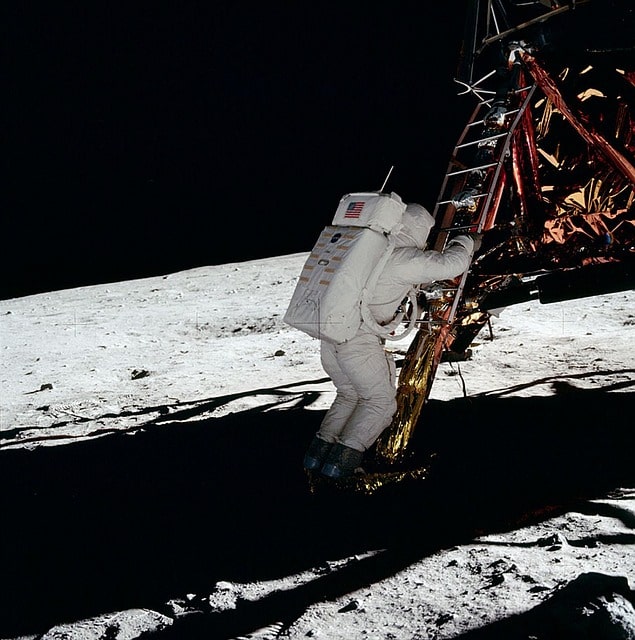
17 – The role of the Moon in stabilizing the Earth’s axis
The Moon’s gravitational influence plays an important role in stabilizing Earth’s axial tilt, which is responsible for the climate stability of our planet. Without the Moon, Earth’s axial tilt would be more variable, leading to significant climate changes.
18 – Moon as a natural mirror
Moonlight is a reflection of sunlight, and the moon acts as a natural mirror that illuminates our nights. Its brightness can vary due to factors such as its position in orbit and the presence of lunar phases.
19 – Discovery of the Moon
The Moon has been the subject of several robotic and manned missions. Notable examples include the Apollo missions, the Soviet Luna program, and more recently the Chinese Chang’e mission. These discoveries have significantly advanced our understanding of the geology and history of the Moon.
20 – Future Moon Mission
In recent years, there has been a resurgence of interest in returning humans to the Moon. NASA’s Artemis program aims to land astronauts on the lunar surface by 2024, paving the way for future scientific research and the possible establishment of a lunar base.

In conclusion,
the Moon continues to fascinate us with its fascinating features and profound effects on Earth. As we uncover more mysteries about our celestial neighbor, our understanding of the Moon’s formation, geology and importance in shaping our planet’s past and future deepens.
The exploration and study of the Moon is testimony to humanity’s relentless curiosity and pursuit of knowledge.
So the next time you look up at the night sky and see the Moon shining brightly, remember the mind-boggling facts that make it a remarkable celestial object that deserves our awe and admiration.
Also Read It-
The Coolest Continent: 20 Fun Facts About Antarctica for Kids
IMPT Crypto Price Prediction 2023, 2025, 2030 – CryptoNewsPod
neil armstrong facts
fun facts about the moon
moon information
interesting facts about the moon
apollo 11 facts
100 facts about the moon
10 interesting facts about moon
50 facts about the moon
10 facts about the moon
lunar eclipse facts
full moon facts
biggest moon in our solar system
5 facts about the moon
interesting facts about neil armstrong
buzz aldrin facts
moon facts nas
titan moon facts
fun facts about neil armstrong
things about the moon
moon facts for adults
moon trivia
5 facts about the moon
30 facts about the moon
blood moon scary facts
strange facts about the moon
moon phases facts
moon info
the moon landing facts
10 interesting facts about neil armstrong
callisto moon facts
weird facts about the moon
neil armstrong buzz aldrin and michael collins facts
facts about earth’s moon
stuff about the moon
astronauts first moon landing
pictures of first moon landing

